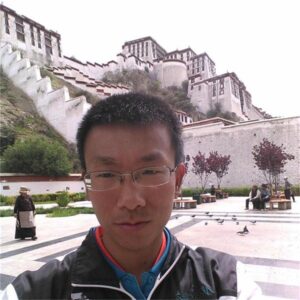With the development of the LED lighting industry, the LED panel light derived from LED backlight has uniform light, no glare, and exquisite structure, and has been loved by many people. The following briefly discusses the structure design and precautions of the flat panel light. Can anyone help.
The structure of the surface light source mainly includes the following parts:
1. Aluminum frame
Appearance structure, and the main structure of LED heat dissipation – generally use AL6063, aluminum extrusion profile, low initial cost investment, beautiful surface treatment, good heat dissipation effect, and a small number of manufacturers make die-casting frames, so that the IP level can be made a little higher, and the light can be sealed. It is better, the overall appearance is beautiful, but the cost of the initial investment in the mold is relatively high.
2. Diffuser plate
The light of guide plate is evenly diffused, and it also plays the role of blocking the dots – the diffuser plate generally uses acrylic T=2.0mm plate or PC board. The cost of acrylic is lower and the light transmittance is slightly higher than that of PC. Acrylic is brittle , The anti-aging performance is weak, the price of PC is slightly expensive, but the anti-aging performance is strong. After the diffuser is installed, the dots cannot be seen, and the light transmittance should be about 90%. The light transmittance of acrylic is 92%, and that of PC is 88%. You can choose the material of the diffuser plate according to your needs, and acrylic materials are generally used.
3. Light guide plate
The side LED light is refracted by the dots to change the light angle and scatter – the light guide plate is the heart of the panel light. The dot design is very important. If the dot design is not good, the overall light effect you see will be very poor. Generally, 1. The middle is bright, both sides are dark 2. There are bright edges on the incoming light side, and the middle is dark 3. When viewed from different angles, the overall brightness is inconsistent 4. Local dark areas are obvious. A large part of the light effect of the light guide plate is in the design of the network, followed by the selection of the plate, but it is not right to blindly pursue the brand of the plate, because many brand manufacturers like Japan’s Mitsubishi, most of their good plates are used. People ordered good, many Mitsubishi sheets out of the market are mostly scraps, and their light transmittance is not as high as that of their own sheets, so the choice of sheet does not necessarily depend on the manufacturer of the sheet, as long as the test has high light transmittance and light efficiency. OK, that’s actually fine.
4. Reflective paper
Reflect the residual light on the back of the light guide plate – generally RW250.
5. Rear cover
Sealed lamp body – generally AL aluminum, the overall texture is strong, and can play a little role in heat dissipation
6. LED light source
Generally, 2835 is used. Some people also use 5630 and 5050. The luminous efficiency of 5630 and 5050 is not high, and the design of the dots is difficult. The versatility is poor, but the cost is low. 2835 has high luminous efficiency and strong versatility. Generally, the light guide plate from other companies can be directly purchased for use at the beginning, without the need for re-proofing and design.
7. Drive power
Lamp drive – there are currently 2 power supply modes 1. Direct use of constant current power supply (this mode has high efficiency, PF value as high as 0.95, high cost performance) 2. Constant voltage with cross-current mode (stable performance, but low efficiency and high cost) General The use of this mode is designed for customers who require certification, because the lamps are low-voltage lamps with 24V input, and do not need to be safety regulations, and can be shipped to various countries directly using a power supply with safety regulations.
Problems to be paid attention to in the design and production process:
1. The thinner the thermally conductive adhesive, the better. It is best to use a self-viscous thermally conductive adhesive, otherwise it will affect the thermal conductivity.
2. The selection of diffuser panels. Now many flat-panel lamps on the market generally choose diffuser panels with a smooth surface and a matte surface. This diffuser panel has a disadvantage, large static electricity, and it is easy to absorb ash and produce bright spots during the production process. In long-term use, dust will enter the lamp body through various ways, which will cause the lamps to have dense bright spots. In the early days, some people used a double-sided diffusion diffuser plate. This diffuser plate has good light guiding effect and low static electricity, which can prevent dust from entering the lamp body. The bright spot effect, but the light transmittance of this diffuser is only 85-88%, and it depends on everyone whether to choose it or not.
3. For the selection of LED lamps, try to choose lamps with high efficiency, because the side-emitting flat panel lamps have limitations in heat dissipation and luminous flux output. If the power is large, the heat dissipation will be affected, and the light efficiency will be low.
4. Try not to glue the light-entering surface when sticking the reflective paper. The glue will absorb light, and it is easy to produce bright edges on the light-entering surface. However, the large-area light guide plate needs to be glued a little, otherwise there will be shadow stripes, because the reflective paper does not This is the case when it is glued tightly and loosened and warped in the lamp body.

